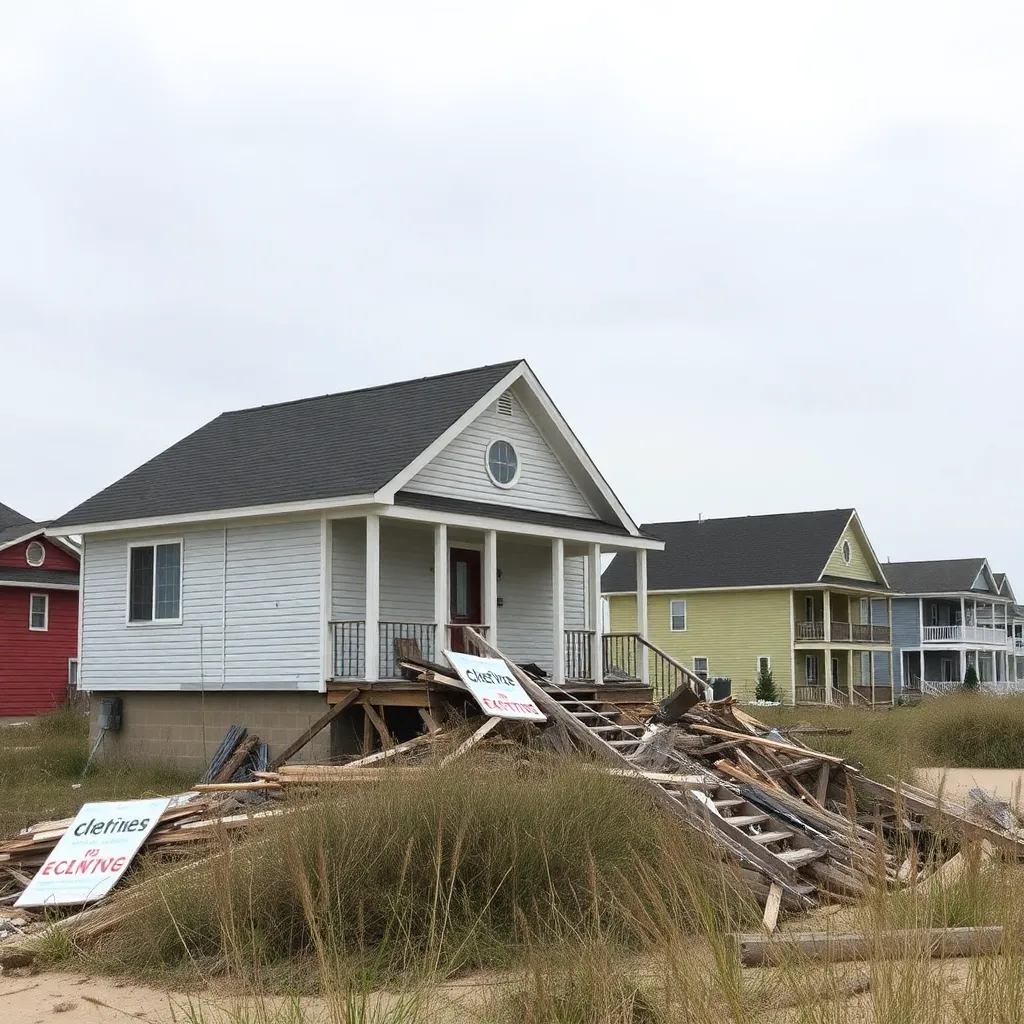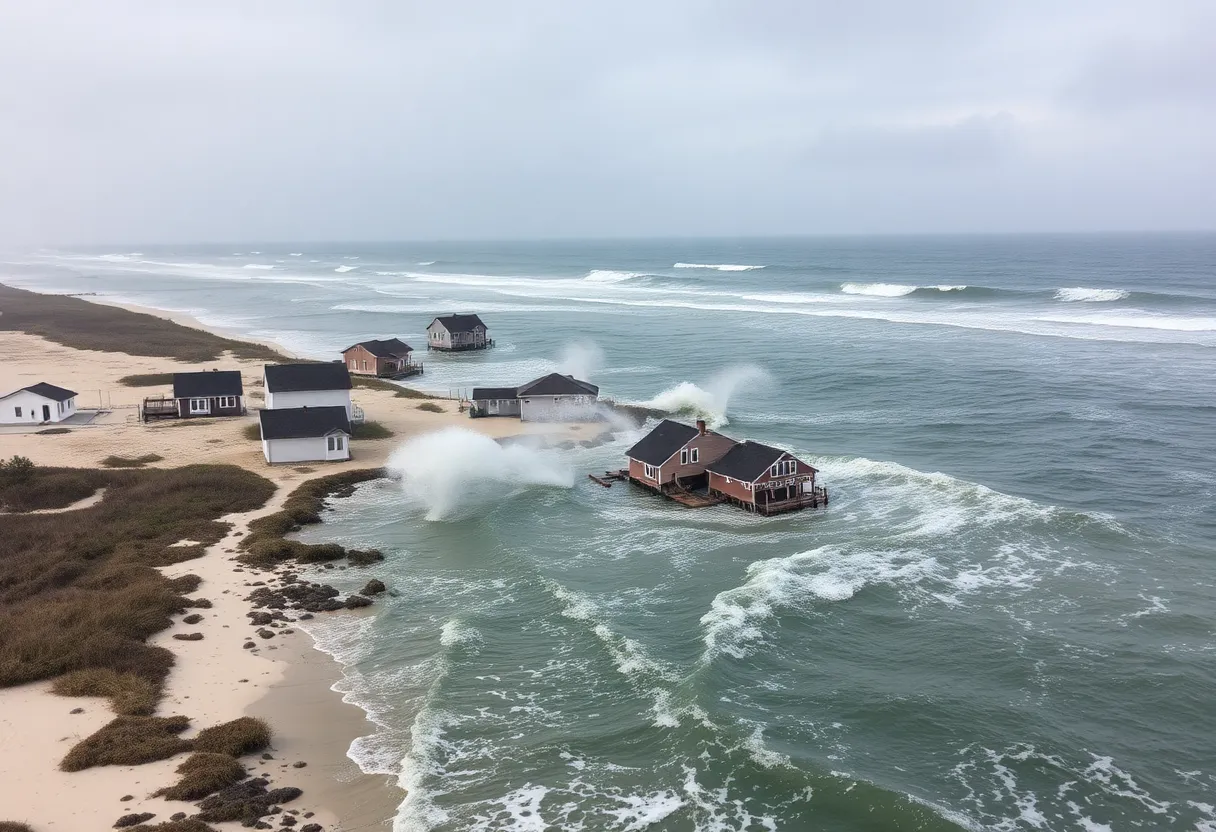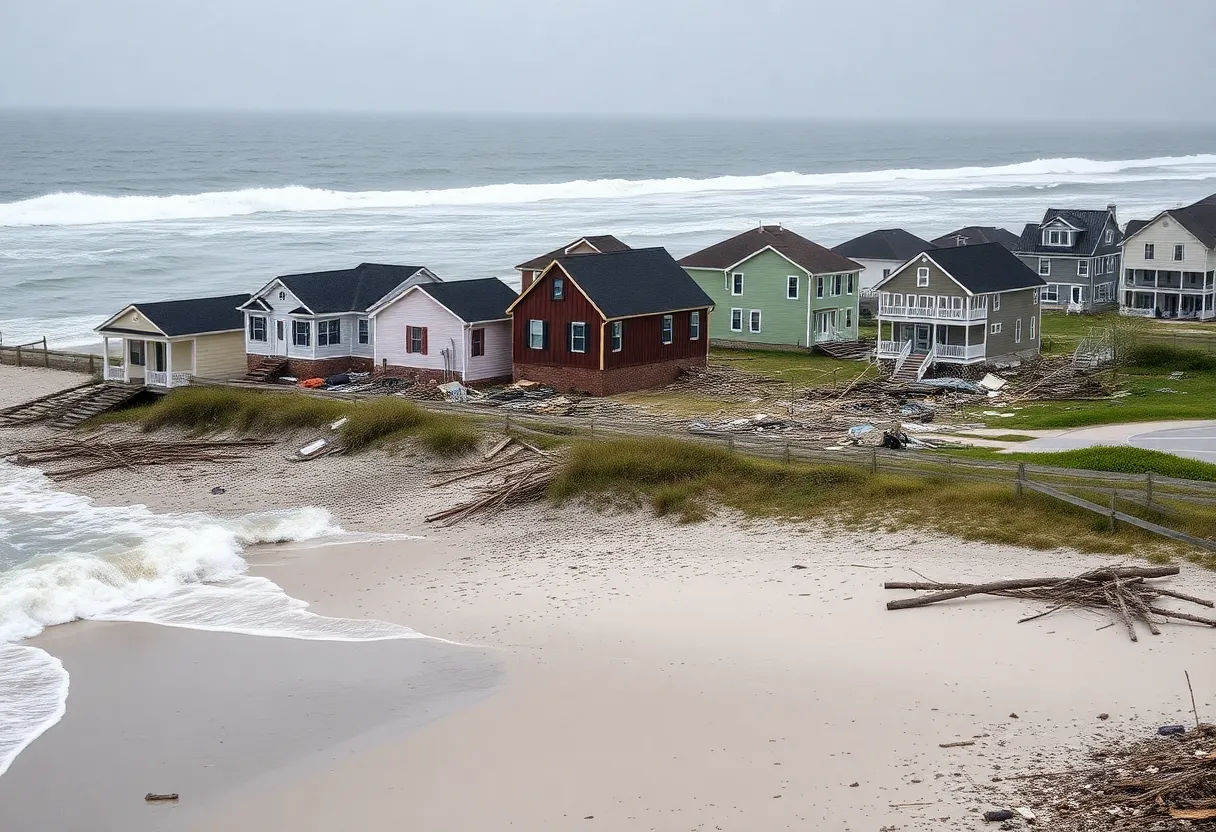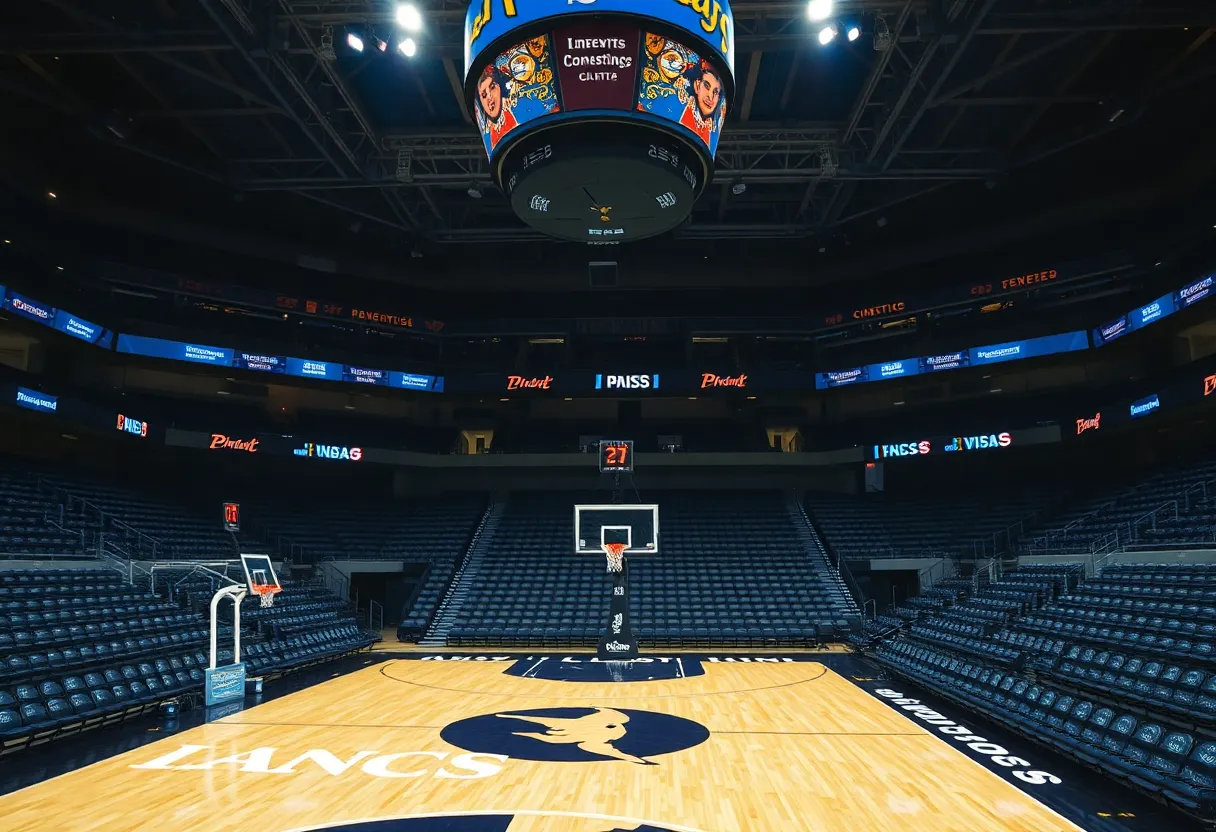Concerns Rise as Homes Continue to Collapse in Rodanthe
Rodanthe, N.C. — If you’ve strolled along the beautiful beaches of Rodanthe lately, you might have noticed more than just the picturesque views. Unfortunately, your walk could come with a side of debris, including chunks of wood, metal scraps, and wires, remnants of collapsed houses that once stood proudly along the shore. Just last month, three homes fell victim to the relentless tides, with one of those collapses occurring during a single week in late September.
A Tough Reality for Homeowners
As the leaves turn and the waves grow more fierce with the coming fall and winter seasons, the reality for many homeowners has become increasingly challenging. After the tumbling of structures like Paul Troy’s family home on G.A. Kohler Court, which went down on September 19, the community is coming to terms with the risks of owning property so close to the sea. “I had that house for over 15 years,” Troy shared, looking back on fond memories now shadowed by loss. His home was the first of three to collapse within a week, and it quickly became a sight for onlookers—with images of his house in the waves making their rounds.
The Cleanup Dilemma
When disaster struck, many homeowners, including Troy, were left scrambling to arrange for cleanup. “I had a contractor ready to go,” he recalled, but the timely notification he expected never came. Instead, he learned about the devastation from park service officials the morning after the collapse. “It felt like I was left in the dark,” he said, expressing frustration regarding the communication—or lack thereof—from the authorities responsible for monitoring these structures.
According to Dave Hallac, the superintendent of the Cape Hatteras National Seashore, homeowners bear the ultimate responsibility for maintaining their properties and cleaning up afterward. “These homes are private, and owners were warned about the risks,” Hallac stated, highlighting that while the Park Service maintains a watchful eye, it cannot monitor every house around the clock.
Financial Burdens Compounded
The financial aspect of these collapses is also something Troy is grappling with. He estimated that he spent over $30,000 just to clean up his property, while Hallac mentioned that the cleanup efforts from the National Seashore would cost around $10,000 to $15,000, a bill they expect to share among the three recent homeowners. “It’s a lot of money, and quite frankly, we didn’t ask for their help,” Troy added, highlighting an ongoing concern about the support systems available for those affected by coastal erosion.
An Ongoing Issue
The reality that these collapses are not unique phenomena feeds into a broader issue. Hallac pointed out that rapid erosion is a common thread for many coastal communities in the Outer Banks, particularly Rodanthe and Buxton. “If homeowners do not take proactive measures to move their properties away from the shore, we will see more of these unfortunate events,” he warned, a sentiment echoed by Troy, who feels there is a disconnect among homeowners, insurance companies, and local authorities.
Looking Ahead
Despite the grim situation, Hallac remains hopeful for collaborative solutions. “We are urging owners to take action well before their homes are in jeopardy,” he commented. With efforts ongoing to secure funding and help for homeowners to relocate their properties before disaster strikes, the main objective is clear: to prevent debris—alongside its environmental impacts—from making its way into the ocean.
Community Resilience
As the Outer Banks rallies in the face of these challenges, it’s evident that a collective approach will be essential. Local authorities and community members alike are encouraged to stay informed and proactive about coastal erosion risk management. While time will tell how effective these measures will be, one thing is for sure: the residents of Rodanthe have shown remarkable resilience in facing the challenges posed by the ocean.

Author: STAFF HERE OUTER BANKS WRITER
The OBX STAFF WRITER represents the experienced team at HEREOBX.com, your go-to source for actionable local news and information in the Outer Banks, Dare County, and beyond. Specializing in "news you can use," we cover essential topics like product reviews for personal and business needs, local business directories, politics, real estate trends, neighborhood insights, and state news affecting the area—with deep expertise drawn from years of dedicated reporting and strong community input, including local press releases and business updates. We deliver top reporting on high-value events such as the Outer Banks Seafood Festival, NC VIP Fishing Tournament, and NCBBA Red Drum Tournament. Our coverage extends to key organizations like the Outer Banks Chamber of Commerce and Outer Banks Community Foundation, plus leading businesses in tourism, retail, and hospitality that power the local economy such as Kitty Hawk Kites, Outer Banks Mall, and Avon Fishing Pier. As part of the broader HERE network, including HEREAsheville.com, HERECharlotte.com, HEREGreensboro.com, and HERERaleigh.com, we provide comprehensive, credible insights into North Carolina's dynamic landscape.





